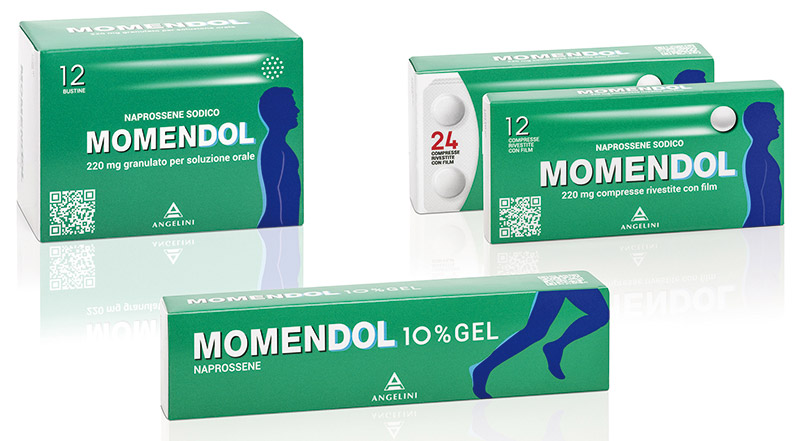Pharmaceutical packs
Market trends and new means of distribution and packaging of various pharmaceutical products (considering only prescription and OTC drugs sold in pharmacies). Barbara Iascone

The pharmaceutical sector has always been one of the most complex manufacturing areas to be interpreted and analyzed, since it follows the principles and rules all of its own. There are many reasons for this. First of all, it should be considered that the sector comprises a large number of “sub-markets”, which derive from the diversity of the drugs produced, which are not mutually replaceable (an anti-inflammatory drug can obviously not be replaced by an antibiotic); practically every type of medicine represents a sort of micro-world unto itself.
Another element that needs to be considered is the action of the State, which in Italy acts both as an economic actor but also, and above all, as a regulator and guarantor of public health. Then there is the “intermediation factor” of the doctors, who prescribe one drug over another taking into account the possible side effects that may occur depending on the state of health of each patient.
As for the distribution channels, for several years now, pharmaceutical products are no longer sold exclusively through pharmacies and hospitals; in fact the whole category of OTC drugs (drugs for which no prescription is required) can be sold through mass retail, herbalists shops and the parapharmacies, alongside which lately, online pharmacy sales are also increasing.
Sector performance
According to Prometeia, the pharmaceutical sector as a whole - OTC and prescription products, including veterinary drugs and those used in hospitals - expressed in 2017 a growth in turnover at current prices of around 4%.
In the two years ‘18 -’19 the positive trend should be confirmed, even if at a slower pace.
Also for ISTAT, the production of drugs in 2017 registered a positive trend, with a growth rate of 7%.
According to Federfarma analyses, pharmaceutical spending under the Italian healthcare system (excluding veterinary drugs) registered a growth of 0.7% (the available data refer to the first six months of 2017). However, this growth refers to the increase in the average net value of the prescriptions, whose numbers are down by 0.6%.
Even the packaging supplied by the Italian healthcare system is down (0.7%) compared to the same period of the previous year.
The numbers on packaging: volumes and consumption
The packaging used by this sector can be divided as follows:
86% goes to A, B and C class prescription drugs (under the Italian health ministry’s classification system), while some 2% goes to prescription products sold without a doctor’s note, and a share of 12% (and growing) is used for OTC.
This analysis of the packaging mix of the Italian pharmaceutical market takes into consideration only prescription and OTC drugs sold in pharmacies, to the exclusion of pharmaceuticals used in hospitals and veterinary drugs.
It is estimated that the sector in question used some 1.989 million packaging units in 2017 (referring exclusively to primary packaging). This estimate does not include the paperboard box, information leaflet or any accessories used for administration.
In terms of weight, the packaging produced in Italy in 2017 amounted to approximately 50.500 t, not counting paperboard boxes for secondary packaging. If that component is included, the figure reaches a total of some 90,000 t, 1% less than in 2016.
If we look at the trend from 2000 to 2017, consumption in terms of units (number of packaging units of prescription and OTC drugs) has grown at an average annual rate of 1,4%.

The functionalities and the forms of packaging
Pharmaceutical packaging is a highly sensitive and complex operation, requiring the packaging to perform multiple tasks:
- protect the product;
- guarantee the absence of potentially harmful interactions between the drug and the container;
- facilitate use of the drug and confer functionality;
- prevent tampering and improper uses of the product, for example through childproofing.
This last aspect will assume an increasing importance, above all in virtue of the European regulation of 2019 concerning the cases of tamper-proof drugs, which expresses particular attention towards children. Many companies have already worked to this effect, filing patents, and Italy is very active, given the number of national patents registered.
The choice of packaging is obviously closely tied to the form of medication (liquid, solid, spray etc.), but also the properties of the substances contained in the drug itself.
The packaging of a new pharmaceutical product must also be approved by the health ministry, and for this reason the packaging mix of this market has always presented a certain stability.
From the analysis of 2017 data, 64% of the ethical and OTC drugs sold in pharmacies are in solid form (including granules, tablets), 30% in liquid form and 6% in other forms (creams, gels, foams, trans-dermal, etc.).
Lastly, the function of packaging as a marketing tool is increasingly relevant, especially in relation to the increase in over-the-counter drugs sold in modern distribution.
The packaging mix: pharmaceutical forms and materials
Pharmaceutical forms: characteristics
If we segment the area of pharmaceutical products by type, we find liquid products, solid products and cream/gel/foam products.
Liquid products. These are liquid oral drugs, injectable drugs and non-drinkable drugs (mainly ophthalmic).
In relation to the first category, the packaging mix is divided between glass (62%) and plastic bottles (35%); the remaining 3% is represented by sachets in coupled material.
The liquid injectable medicines are packed exclusively in glass, while the cream/gel/foam products are 93% in plastic vials, 5% in sachets of coupled material and 2% in glass vials.
Solid products. Starting from drugs for oral use (granules, tablets, sugared almonds, etc.), the packaging mix is composed as follows: 92% blisters in ALL/PVC or ALL/ALL; the remaining part is divided between polylaminate
Barbara Iascone
Istituto Italiano imballaggio

















